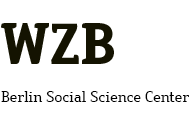PREVALÊNCIA E FATORES ASSOCIADOS À ECTOPIA TESTICULAR NO RECÉM-NASCIDO PREMATURO
Resumo
Introdução: O criptorquidismo é uma das anomalias genitais mais comuns nos recém-nascidos, varia de 2,4 a 5%. Entretanto no prematuro e/ou baixo peso ao nascimento, esse numero é ainda maior e chega a ser até de 30%. Objetivo: O objetivo primário é avaliar se o peso ao nascimento é um fator determinante para a descida testicular completa no recém-nascido prematuro. Justificativa: Comprovar que em recém nascidos vivos pré termos, o extremo baixo peso (menor que 1000g) é um fator diretamente relacionado à criptorquidia, assim como já descrito em natimortos. Metodologia: Os neonatos do hospital Guilherme Álvaro, nascidos antes das 37 semanas de gestação, terão os dados coletados até 72h do puerpério, após aprovação e preenchimento do Termo de Consentimento Livre e Esclarecido pela mãe ou responsável legal. Serão analisados fatores maternos e do recém nascido para a estratificação de grupos a fim de avaliar o peso ao nascimento como variável preditora da adequada descida testicular.
Texto completo:
PDFReferências
Damiani D, Setian N, Kuperman H, et al. Genitália ambígua: diagnóstico diferencial e conduta. Arq Bras Endocrinol Metab. 2001 Feb; 45( 1 ): 37-47.
Sampaio FJ, Favorito LA. Analysis of testicular migration during the fetal period in humans. J Urol. 1998 Feb;159(2):540-2.
Favorito LA, Sampaio FJ. Testicular migration chronology: do the right and the left testes migrate at the same time? Analysis of 164 human fetuses. BJU Int. 2014 Apr;113(4):650-3.
Favorito LA, Costa WS, Sampaio FJ. The position of the testis during the fetal period. An additional parameter to estimate fetal weight.Int Braz J Urol 2010;36(5):609-13.
Van Brakel J, Kranse R, de Muinck Keizer-Schrama SM, et al. Fertility potential in a cohort of 65 men with previously acquired undescended testes.J Pediatr Surg. 2014 Apr;49(4):599-605.
Biggs ML, Baer A, Critchlow CW. Maternal, delivery, and perinatal characteristics associated with cryptorchidism: a population-based case-control study among births in Washington State. Epidemiology. 2002 Mar;13(2):197-204.
Preiksa RT, Zilaitiene B, Matulevicius V, et al. Higher than expected prevalence of congenital cryptorchidism in Lithuania: a study of 1204 boys at birth and 1 year follow-up. Hum Reprod. 2005 Jul;20(7):1928-32.
Weir HK, Marrett LD, Kreiger N, et al. Pre-natal and peri-natal exposures and risk of testicular germ-cell cancer. Int J Cancer. 2000 Aug 1;87(3):438-43.
Zilberman D, Inbar Y, Heyman Z,et al. Torsion of the cryptorchid testis--can it be salvaged? J Urol. 2006 Jun;175(6):2287-9.
Adshead J, Khoubehi B, Wood J, et al. Testicular implants and patient satisfaction: a questionnaire-based study of men after orchidectomy for testicular cancer. BJU Int. 2001 Oct;88(6):559-62.
Boisen KA, Kaleva M, Main KM, et al. Difference in prevalence of congenital cryptorchidism in infants between two Nordic countries. Lancet 2004 17;363(9417):1264-9.
Mayr JM, Lawrenz K, Berghold A. Undescended testicles: an epidemiological review.Acta Paediatr. 1999 Oct;88(10):1089-93.
Chen YF, Huang WY, Chen SC, et al. Factors associated with delayed pediatric hypospadias surgery in Taiwan: a population-based, nationwide analysis. J Formos Med Assoc. 2013 Jan;112(1):48-53.
Turial S, Enders J, Krause K, et al.Laparoscopic inguinal herniorrhaphy in babies weighing 5 kg or less. Surg Endosc. 2011 Jan;25(1):72-8.
Valleau JC, Sullivan EL.The impact of leptin on perinatal development and psychopathology. J Chem Neuroanat. 2014 May 23.
Leventakou V, Roumeliotaki T, Martinez D, et al. Fish intake during pregnancy, fetal growth, and gestational length in 19 European birth cohort studies. Am J Clin Nutr. 2014 Mar;99(3):506-16.
Lausman A, Kingdom J, Gagnon R, et al. Intrauterine growth restriction: screening, diagnosis, and management. J Obstet Gynaecol Can. 2013 Aug;35(8):741-57.
Vucic V, Berti C, Vollhardt C, et al. Effect of iron intervention on growth during gestation, infancy, childhood, and adolescence: a systematic review with meta-analysis. Nutr Rev. 2013 Jun;71(6):386-401.
Zelop CM, Javitt MC, Glanc P, et al. ACR Appropriateness Criteria® growth disturbances - risk of intrauterine growth restriction. Ultrasound Q. 2013 Sep;29(3):147-51.
Hougaard KS, Larsen AD, Hannerz H, et al. Socio-occupational class, region of birth and maternal age: influence on time to detection of cryptorchidism (undescended testes): a Danish nationwide register study. BMC Urol. 2014 Feb 28;14:23.
Håkonsen LB, Ernst A, Ramlau-Hansen CH. Maternal cigarette smoking during pregnancy and reproductive health in children: a review of epidemiological studies. Asian J Androl. 2014 Jan-Feb;16(1):39-49.
Trabert B, Chodick G, Shalev V, et al. Gestational Diabetes and the Risk of Cryptorchidism and Hypospadias.
Rachmani E, Zachariou Z, Snyder H, et al. Complete Testis-Epididymis Nonfusion Anomaly: A Typical Association with Cryptorchid Testis. Urol Int. 2012;89(3):355-7.
Kraft KH, Bhargava N, Schast AW, et al. Histological Examination of Solitary Contralateral Descended Testis in Congenital Absence of Testis. J Urol. 2012 Feb;187(2):676-80.
Boguszewski MC, Mericq V, Bergada I, et al. Latin American Consensus: Children Born Small for Gestational Age. BMC Pediatr. 2011 Jul 19;11:66.
Goto E. Prediction of low birthweight and small for gestational age from symphysis-fundal height mainly in developing countries: a meta-analysis. J Epidemiol Community Health. 2013 Dec 1;67(12):999-1005.
Ku JH, Kim ME, Lee NK, et al. Testicular volume and masculine identity in men with unilateral cryptorchidism: results of a community-based survey in Korea. Urol Res. 2003 Oct;31(5):312-6.
Apontamentos
- Não há apontamentos.
Direitos autorais 2016 Revista UNILUS Ensino e Pesquisa - RUEP
ISSN (impresso): 1807-8850
ISSN (eletrônico): 2318-2083
Periodicidade: Trimestral
Primeiro trimestre, jan./mar., submissões até 31 de março, publicação da edição até 15 de agosto.
Segundo trimestre, abr./jun., submissões até 30 de junho, publicação da edição até 15 de outubro.
Terceiro trimestre, jul./set., submissões até 30 de setembro, publicação da edição até 15 de janeiro.
Quarto trimestre, out./dez., submissões até 31 de dezembro, publicação da edição até 15 de abril.

Este obra está licenciado com uma Licença Creative Commons Atribuição-NãoComercial-SemDerivações 4.0 Internacional.
Indexadores
Estatística de Acesso à RUEP
Monitorado desde 01 de dezembro de 2025.
Monitorado desde 22 de novembro de 2016.













